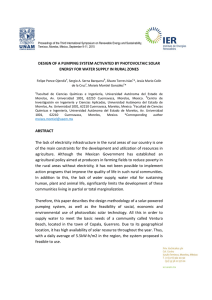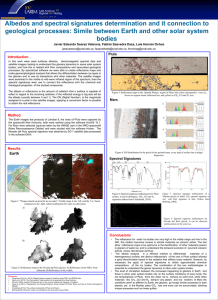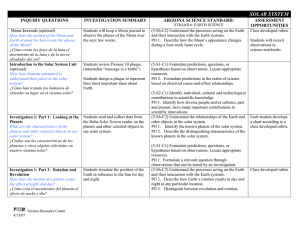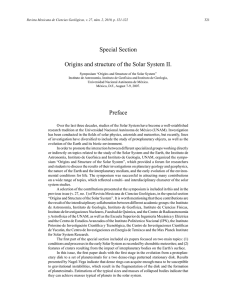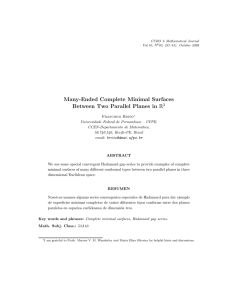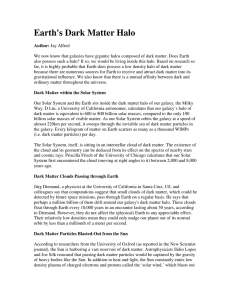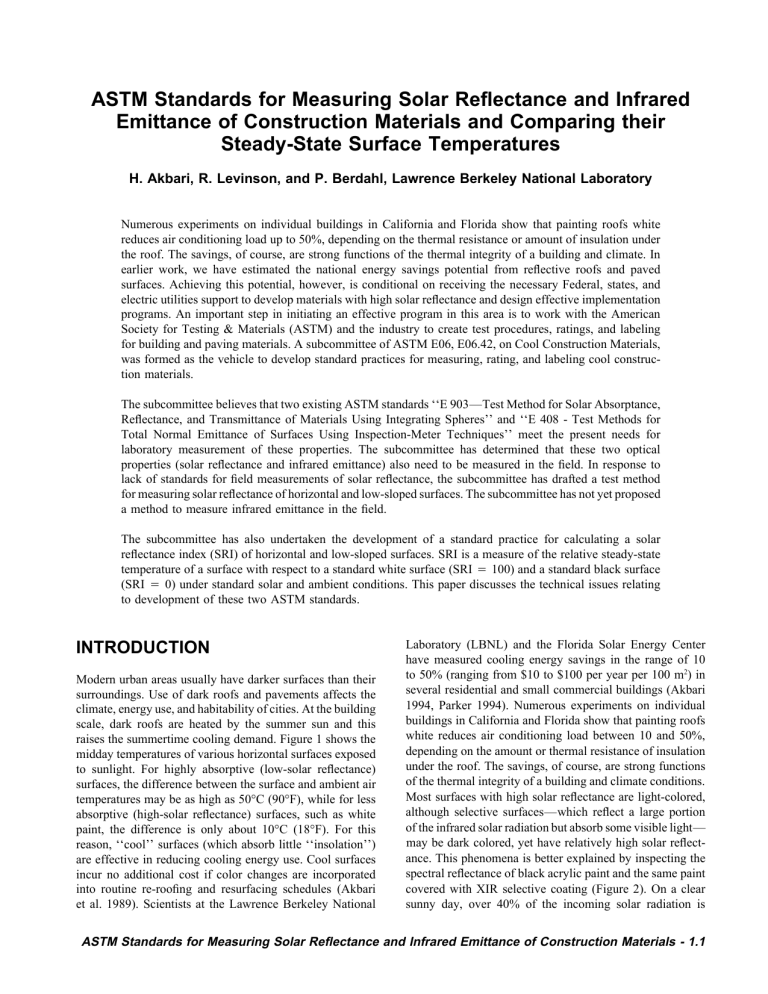
ASTM Standards for Measuring Solar Reflectance and Infrared Emittance of Construction Materials and Comparing their Steady-State Surface Temperatures H. Akbari, R. Levinson, and P. Berdahl, Lawrence Berkeley National Laboratory Numerous experiments on individual buildings in California and Florida show that painting roofs white reduces air conditioning load up to 50%, depending on the thermal resistance or amount of insulation under the roof. The savings, of course, are strong functions of the thermal integrity of a building and climate. In earlier work, we have estimated the national energy savings potential from reflective roofs and paved surfaces. Achieving this potential, however, is conditional on receiving the necessary Federal, states, and electric utilities support to develop materials with high solar reflectance and design effective implementation programs. An important step in initiating an effective program in this area is to work with the American Society for Testing & Materials (ASTM) and the industry to create test procedures, ratings, and labeling for building and paving materials. A subcommittee of ASTM E06, E06.42, on Cool Construction Materials, was formed as the vehicle to develop standard practices for measuring, rating, and labeling cool construction materials. The subcommittee believes that two existing ASTM standards ‘‘E 903—Test Method for Solar Absorptance, Reflectance, and Transmittance of Materials Using Integrating Spheres’’ and ‘‘E 408 - Test Methods for Total Normal Emittance of Surfaces Using Inspection-Meter Techniques’’ meet the present needs for laboratory measurement of these properties. The subcommittee has determined that these two optical properties (solar reflectance and infrared emittance) also need to be measured in the field. In response to lack of standards for field measurements of solar reflectance, the subcommittee has drafted a test method for measuring solar reflectance of horizontal and low-sloped surfaces. The subcommittee has not yet proposed a method to measure infrared emittance in the field. The subcommittee has also undertaken the development of a standard practice for calculating a solar reflectance index (SRI) of horizontal and low-sloped surfaces. SRI is a measure of the relative steady-state temperature of a surface with respect to a standard white surface (SRI 4 100) and a standard black surface (SRI 4 0) under standard solar and ambient conditions. This paper discusses the technical issues relating to development of these two ASTM standards. INTRODUCTION Modern urban areas usually have darker surfaces than their surroundings. Use of dark roofs and pavements affects the climate, energy use, and habitability of cities. At the building scale, dark roofs are heated by the summer sun and this raises the summertime cooling demand. Figure 1 shows the midday temperatures of various horizontal surfaces exposed to sunlight. For highly absorptive (low-solar reflectance) surfaces, the difference between the surface and ambient air temperatures may be as high as 50°C (90°F), while for less absorptive (high-solar reflectance) surfaces, such as white paint, the difference is only about 10°C (18°F). For this reason, ‘‘cool’’ surfaces (which absorb little ‘‘insolation’’) are effective in reducing cooling energy use. Cool surfaces incur no additional cost if color changes are incorporated into routine re-roofing and resurfacing schedules (Akbari et al. 1989). Scientists at the Lawrence Berkeley National Laboratory (LBNL) and the Florida Solar Energy Center have measured cooling energy savings in the range of 10 to 50% (ranging from $10 to $100 per year per 100 m2) in several residential and small commercial buildings (Akbari 1994, Parker 1994). Numerous experiments on individual buildings in California and Florida show that painting roofs white reduces air conditioning load between 10 and 50%, depending on the amount or thermal resistance of insulation under the roof. The savings, of course, are strong functions of the thermal integrity of a building and climate conditions. Most surfaces with high solar reflectance are light-colored, although selective surfaces—which reflect a large portion of the infrared solar radiation but absorb some visible light— may be dark colored, yet have relatively high solar reflectance. This phenomena is better explained by inspecting the spectral reflectance of black acrylic paint and the same paint covered with XIR selective coating (Figure 2). On a clear sunny day, over 40% of the incoming solar radiation is ASTM Standards for Measuring Solar Reflectance and Infrared Emittance of Construction Materials - 1.1 Figure 1. The midday temperatures of various horizontal surfaces exposed to sunlight. near-infrared. As a result, covering the black surface with a selective (XIR) film has lead to an increase of 0.28 in the solar reflectivity of the surface and to a reduction of 10°C in surface temperature (see Fig. 1). Hence, it is possible to develop cool materials that are highly reflective in the near infrared band with a choice of light colors in the visible spectrum. Darker surfaces also more quickly warm the air over urban areas, leading to the creation of summer urban ‘‘heat islands.’’ On a clear summer afternoon, the air temperature in a typical city can be about 1n-dash5°C (2n-dash9°F) hotter than the surrounding rural area. Akbari et al. (1992) have found that peak urban electric demand in five American cities (Los Angeles, CA; Washington, DC; Phoenix, AZ; Tucson, AZ; and Colorado Springs, CO) rises by 2n-dash4% for each 1°C rise in daily maximum temperature above a threshold of 15 to 20°C. The additional air-conditioning use caused by this urban air temperature increase is responsible for 5n-dash10% of urban peak electric demand at a direct cost of several billion dollars annually. Scientists at LBNL have examined the impacts of using cool surfaces (cool roofs and pavements) on reducing the urban air temperature and hence further reducing cooling energy 1.2 - Akbari, Levinson and Berdahl use and smog. At the community scale, increasing the solar reflectance of urban surfaces can limit or reverse an urban heat island effectively and inexpensively. Increasing the solar reflectance of urban surfaces can be implemented by a program which 1) rates and labels roofing materials by their temperature rise on a cloudless summer day; 2) adopts relatively mild standards (for example, new roofs run cooler than halfway between the surface temperature of typical white and black surfaces) and 3) offers incentives to beat the standards such as electric utilities offering rebates on new roofs (or re-roofs). LBNL researchers have simulated the cooling achieved by increasing the reflectance of roofs and roadways in the Los Angeles Basin (Taha 1995b). About 17% of the urbanized area in the basin is covered by roofs and roads which can realistically have their solar reflectance raised by 30% when they receive their normal repairs. The result is an overall reduction in temperature peaking at about 2°C (4°F) by 3 pm. This summertime temperature reduction has a significant effect on further reducing building cooling energy use. An estimate of the national impact of cool surfaces (combining the cooling effect at the building level and communitywide cooling) is summarized in Table 1. Figure 2. Spectral reflectance of black acrylic paint and the same paint covered with XIR selective coating. Table 1. Base-case U.S. air-conditioning use and savings potential of cool surfaces. We estimate that 13% of air conditioning is avoided by 2015. Year 1. Electricity (BkWh) 2. $(Utility ` Customer) cost† 3. CO2(MtC*) † 1995 2015 Base Case Base Case Savings‡ 440 540 70 $44 B $54 B $7 B 110 135 18 Assuming 1 kWh costs 10 cents in 1994 dollars *MtC 4 million metric tons of carbon ‡ Potential savings in 20 years when roof resurfacing is completed The effect of temperature on smog is also very significant. At low maximum daily temperatures (below 22°C), the maximum concentration of ozone is below the California standard of 90 parts per billion (ppb); at high temperatures (above 35°C) practically all days are smoggy. We have simulated the impact of urban-wide cooling in Los Angeles on smog; the results show a significant reduction in ozone concentration (Taha 1995a,b). The simulations predict a reduction in population-weighted smog (ozone) of 10ndash20%. ASTM STANDARDS Table 1 describes potential savings from increased solar reflectance. However, achieving this potential is conditional on implementing the changes in surface properties. An important step in initiating an effective program in this area is to work with ASTM and the industry to create test procedures, ratings, and labels for cool materials. A subcommittee ASTM Standards for Measuring Solar Reflectance and Infrared Emittance of Construction Materials - 1.3 of E06, E06.42, on Cool Construction Materials, was formed as part of a national plan to exploit cool construction technology and materials. In 1994, a group of industry representatives, including several ASTM members, from the public and private sectors attended two workshops on cool construction materials. The group formed the National Committee for the Planning of the Cool Construction Materials Program. One of the major tasks in this National Plan is to develop performance data and standard procedures for evaluation of cool construction materials. Subcommittee E06.42 was formed as the vehicle to develop standard practices for measuring, rating, and labeling cool construction materials. Standards for Measuring Solar Reflectance and Infrared Emittance The ASTM E06 subcommittee believes that two existing ASTM standards ‘‘E 903—Test Method for Solar Absorptance, Reflectance, and Transmittance of Materials Using Integrating Spheres’’ and ‘‘E 408—Test Methods for Total Normal Emittance of Surfaces Using Inspection-Meter Techniques’’ meet the present needs for laboratory measurement of these properties. The subcommittee has determined that these two optical properties also need to be measured in the field. In response to the lack of standards for field measurements of solar reflectance, the subcommittee has drafted a test method for measuring solar reflectance of horizontal and low-sloped surfaces. The subcommittee has not yet proposed a method to measure infrared emittance in the field. The draft test method covers the measurement of solar reflectance of various horizontal and low-sloped urban surfaces, materials, and natural surfaces in the field, using a pyranometer. The method is intended for use when the sun angle to the normal from a surface is less than 45 degrees. The test method applies to large (circles at least four meters in diameter or squares four meters per side), homogeneous, low-sloped, dry surfaces, such as roofs, streets, and parking lots. A pyranometer is used to measure incoming and reflected solar radiation for a uniform flat surface. The solar reflectance is the ratio of the reflected radiation to the incoming radiation. A precision pyranometer (such as Eppley PSP Pyranometer1), sensitive to radiant energy in the 280-2800 nm band is recommended. A typical PSP yields a linear output of 50.5% between 0 and 51400 W m12 and a response time of one second. Other suitable pyranometers are discussed in Zerlaut (1989). The double-dome design of the PSP minimizes the effect of internal convection which changes as the pyranometer is tilted at different angles. For this reason, the PSP is especially suitable for this test, since measurement of solar reflectance requires the apparatus to alternatively 1.4 - Akbari, Levinson and Berdahl face up and down. Most pyranometers are precalibrated by manufacturers. It is a good practice to recalibrate the pyranometer as specified by the manufacturer (typically once every year or two years). Recalibration is done by the manufacturer of the pyranometer. The analog output from the pyranometer is converted to digital output with a readout meter (such as EPLAB Model 455 Instantaneous Solar Radiation Meter) that has an accuracy of better than 50.5% and a resolution of 1 W m12. The meter shall be scaled to the sensitivity of the specific PSP by the manufacturer of the pyranometer. Alternatively, a precision voltmeter can be used. The pyranometer is mounted on an arm and a stand that places the sensor at a height of 50 cm above the surface to minimize the effect of the shadow on measured reflected radiation. The arm and stand shall be strong, cast the smallest possible shadow, and allow the pyranometer to be turned upward and downward easily. The measurements should be done in conditions where the angle of the sun to the normal from the surface of interest is less than 45 degrees. For flat and low-sloped surfaces, this limits the test between 9 a.m. and 3 p.m. local standard time; this is when solar radiation is at least 70% of the value obtained at solar noon for that day. In winter months (when solar angle is low), the test should be performed between 10 a.m. and 2 p.m. Cloud cover and haze significantly affect the measurements. The tests shall be conducted on a clear sunny day with no cloud cover or haze during the individual measurements. The following criteria shall be used to establish the suitability of the measurement conditions: ● Haze: As long as the solar disk is visible and solar flux is not changing rapidly during the test, the measurements can be performed with reasonable accuracy. ● Clouds: The impact of clouds close to the sun is larger than clouds on the horizon. It is important to make the measurements with stable solar conditions. The best way of determining stability is to make several measurements (each performed within a two-minute period) and making sure that the calculated solar reflectance is repeatable within 1% during the measurement period. The repeatability of the measured solar reflectance using the pyranometer is within 51%. The solar reflectance of most exterior surfaces, however, is inherently variable due to variations in the materials, weathering conditions, and a broad range of environmental contaminants. To adequately represent the solar reflectance of these surfaces, a minimum of three measurements from widely spaced areas (locations separated by more than 10 times the height of the sensor above the surface being measured) must be collected, and the detailed condition (surface condition, location, and surrounding objects) of each sample must be recorded. ● Reference Black Surface Temperature (Tb)—the steadystate temperature of a black surface with solar reflectance of 0.05 and infrared emittance of 0.9, under the standard solar and ambient conditions. Standards for Calculating Solar Reflectance Index ● Reference White Surface Temperature (T w )—the steady-state temperature of a white surface with solar reflectance of 0.80 and infrared emittance of 0.9, under the standard solar and ambient conditions. ● Sky Temperature (Tsky)—the temperature of a black body that would radiate the same power in the thermal infrared spectrum (5 to 40 nm) toward the earth as does the sky. Another activity of the subcommittee includes developing a Standard Practice for Calculating Solar Reflectance Index of Horizontal and Low-Sloped Surfaces. It is the objective of this standard to define a Solar Reflectance Index (SRI) which measures the relative steady-state temperature of a surface with respect to a standard white surface (SRI 4 100) and standard black surface (SRI 4 0) under standard solar and ambient conditions. The steady-state temperature (SST) of a surface under the sun is strongly correlated to solar the reflectance and the infrared emittance of the surface. Typically, the SST of dark surfaces (with low solar reflectance) is higher than lightcolored surfaces (with high solar reflectance). Similarly, surfaces with low infrared emittance have higher SSTs than surfaces with high infrared emittance. The procedure recommended in this standard will allow a direct comparison of SST of surfaces under the sun. For a dry surface under the sun and perfectly insulated underneath, the steady-state surface temperature can be approximated by (1-a)I 4 «s(Ts4 1 Tsky4) ` hc(Ts 1 Ta) (1) where, a I « s Ts Tsky hc Ta 4solar reflectance 4solar flux, Wm-2 4infrared emittance 4Stefan Boltzmann constant, 5.6710 1 8 Wm12K14 4steady-state surface temperature, K 4sky temperature, K 4convective coefficient, Wm12K11 4air temperature, K. For the purpose of this calculation, the following definitions are made: ● Standard Solar and Ambient Conditions—a solar flux of 1000 Wm12, ambient air temperature of 310K, convective coefficient of 12 Wm12 K11, and apparent sky temperature of 300K. ● Steady-state Surface Temperature (Ts)—the temperature of the surface, in K, under the standard solar and ambient conditions. The surface temperature Ts (°C) 4 Ts (K) 1 273. Under the standard solar and ambient conditions, the steadystate temperature for the black and white reference surfaces is 355.61K (82.6°C) and 317.76K (44.7°C), respectively. Given the solar reflectance and infrared emittance of a surface, Eq. 1 needs to be solved iteratively for surface temperature. Alternatively, for the defined standard conditions, one can use the following equation or Fig. 3 to estimate the surface temperature. Ts(K) 4 310.04 ` 82.49a 1 2.82s 154.33as ` 21.72as2 (2) where, a 4 solar absorptance 4 1 1 a Surface temperatures estimated by Eq. 2 or Fig. 3 are accurate within 1K compared to the iterative solution of Eq. 1. A Solar Reflectance Index (SRI) can be defined as SRI 4 Tb 1 Ts 2 100 Tb 1 Tw (3) Under the defined standard solar and ambient conditions, Eq. 3 reduces to SRI 4 218 1 2.64Ts(°C) (4) Determination of solar reflectance and infrared emittance, and subsequent calculation of the relative temperature of the surfaces with respect to black and white reference temperatures (defined as Solar Reflectance Index, SRI) will help designers and consumers to choose the proper materials for their buildings and communities. The method described here gives the SRI of surfaces based on measured solar reflectances and infrared emittances of the surfaces. Figure 1. also shows the calculated SRI for test samples. ASTM Standards for Measuring Solar Reflectance and Infrared Emittance of Construction Materials - 1.5 Figure 3. A graphical approach in obtaining steady-state temperature of a surface from its solar reflectance and infrared emittance, under the defined standard environmental conditions. Sensitivity of SRI to Variation in Environmental Conditions The SRI of a test surface varies with two material properties, solar reflectance and infrared emittance, and six environmental conditions, insolation, convection coefficient, roof thermal resistance (including inside convection coefficient), air temperature, sky temperature, and inside air temperature. (Eq. 1 does not show the conductive coupling to the building interior.) While a full analysis of the sensitivity of SRI to these eight parameters is outside the scope of this paper, the following guidelines may be useful to the practitioner. SRI is an excellent predictor of solar reflectance for materials with high infrared emittance, i.e. non-metals, and is generally 1.6 - Akbari, Levinson and Berdahl insensitive to variations in convection coefficients for these materials (Figure 4). For surfaces with infrared emittance greater than 0.8, SRI is generally insensitive to roof thermal resistance because a roof’s thermal conductance (the reciprocal of thermal resistance) is typically an order of magnitude smaller than the outside coefficients of convective and radiative heat transfer. For surfaces with infrared emittance greater than 0.8, SRI is insensitive to choice of sky temperature, ambient temperature, and inside temperature. For unoxidized metallic surfaces that are characterized with low infrared emittance, the SRI calculated by the above procedure varies significantly with the choice of outside Figure 4. Calculated SRI error with variation in convection coefficient and solar reflectance of a surface with an infrared emittance of 0.9. These errors are small compared to the 0n-dash100 index range. is independent of wavelength and equal to 0.9, as is often the case. However, measurements are needed to see how generally this rule of thumb is applicable. Bare metal surfaces and aluminum-pigmented coatings are known to have lower emittances, which also vary with wavelength in the thermal infrared range. We have recently completed the setup of a new instrument, a Spectral Emissometer, which permits the determination of spectral emittance from 5 to 40 micrometers wavelength. It consists of a Bruker Instruments IFS 28 Fourier Transform InfraRed (FTIR) spectrometer, fitted with an external port and an external chamber for housing the heated sample under test. We are in the process of developing a national database on cool materials that will be published in paper and electronic forms. It will include tabulations of solar reflectance and infrared emittance of building materials and lists of manufacturers. It will be accompanied by analyses that interpret the data and provide advice for its use. In-house measurements of solar reflectance and infrared emittance will be used to provide data not otherwise available and to allow us to evaluate the data we are able to obtain from other sources. SUMMARY convection coefficient, ambient temperature, and sky temperature. Hence, this procedure is not recommended for metallic surfaces. DATA BASE FOR COOL CONSTRUCTIONS MATERIALS Solar reflectance values are found in the literature for a few building materials, but the available information is quite limited. Manufacturers, if they measure reflectance at all, often measure the visible reflectance. However, at least half of the energy content of sunlight is in the near infrared and ultraviolet portions of the spectrum. The best procedure for measuring solar reflectance in the laboratory is the use of a spectrometer to measure the monochromatic reflectance across the solar spectrum, as is shown for some white roof coatings in Figure 5. Then a standard solar spectrum is used as a weighting function to compute the overall fraction of solar energy reflected under typical atmospheric conditions. In our laboratory, we perform these measurements with a Perkin-Elmer Lambda 19 UV-VIS-NIR spectrometer fitted with a Labsphere integrating sphere. The technical issues relating to development of two ASTM standards addressing the measurement of the solar reflectance of the horizontal surfaces in the field and translating the results into a comparative index have been discussed. Two existing ASTM standards ‘‘E 903 1 Test Method for Solar Absorptance, Reflectance, and Transmittance of Materials Using Integrating Spheres’’ and ‘‘E 408 1 Test Methods for Total Normal Emittance of Surfaces Using Inspection-Meter Techniques’’ meet the present needs for laboratory measurement of solar reflectance and infrared emittance of surfaces. We are developing a database for solar reflectance and infrared emittance of building and paving materials. The measured solar reflectance and infrared emittance of surfaces are used to calculate a solar reflectance index as defined by a proposed standard practice. SRI is a measure of the relative steady-state temperature of a surface with respect to a standard white surface (SRI 4 100) and a standard black surface (SRI 4 0) under defined standard solar and ambient conditions. Our sensitivity analyses indicate that SRI is an excellent predictor of relative surface temperature for materials with high infrared emittance, i.e. non-metals, and is generally insensitive to variations in convection coefficients, ambient temperature, and sky temperature. ACKNOWLEDGEMENT Infrared emittance values for building materials have not been widely measured. A common strategy for non-metals and metals with opaque coatings is to assume the emittance This work was supported by the the Assistant Secretary for Conservation and Renewable Energy, Office of Building ASTM Standards for Measuring Solar Reflectance and Infrared Emittance of Construction Materials - 1.7 Figure 5. Spectral reflectance of seven white roof coatings. Also shown is the shape of the solar spectrum (lower curve), which indicates how the solar energy is distributed over wavelength. The overall solar reflectance of these materials are: Toughkote, 0.85; Acryshield, 0.83; TriLastic, 0.83; Guardkote, 0.74; MCI, 0.80; and Triangle No. 7, 0.84. These values are typical for high-quality roof coatings. Technologies of the U. S. Department of Energy, under contract No. DE-AC0376SF00098. D.C.: U. S. Environmental Protection Agency, Office of Policy Analysis, Climate Change Division. REFERENCES Akbari, H., A. Rosenfeld, and H. Taha. 1989. ‘‘Recent Developments in Heat Island Studies, Technical and Policy,’’ In Proceedings of the Workshop on Urban Heat Islands, Berkeley, Calif.: Lawrence Berkeley National Laboratory. (February 23n-dash24). Akbari, H., S. Bretz, H. Taha, D. Kurn, and J. Hanford. 1994. ‘‘Peak Power and Cooling Energy Savings of Highalbedo Roofs,’’ Submitted to Energy and Buildings. Berkeley, Calif.: Excerpts from Lawrence Berkeley National Laboratory Report LBL-34411. Akbari, H, S. Davis, S. Dorsano, J. Huang, and S. Winnett (editors). 1992. Cooling Our Communities: A Guidebook on Tree Planting and Light-Colored Surfacing. Washington, 1.8 - Akbari, Levinson and Berdahl Akbari, H., A. Rosenfeld, and H. Taha. 1990. ‘‘Summer Heat Islands, Urban Trees, and White Surfaces,’’ In Proceedings of American Society of Heating, Refrigeration, and Air Conditioning Engineers. Atlanta, Ga. (February). Also LBNL Report Number LBL-28308, Berkeley, Calif.: Lawrence Berkeley Laboratory. Berdahl, P. and S. Bretz. 1994. ‘‘Spectral Solar Reflectance of Various Roof Materials,’’ presented at the Cool Building and Paving Materials Workshop, Gaithersburg, Md., (July). Berdahl, P. and S. Bretz. 1995. ‘‘Preliminary survey of the solar reflectance of cool roofing surfaces.’’ Submitted to Energy and Buildings. Bretz, S.H. Akbari, A. Rosenfeld, and H. Taha. 1992. Implementation of Solar-Reflective Surfaces: Materials and Utility Programs. Lawrence Berkeley National Laboratory Report Number LBL-32467. Berkeley, Calif.: Lawrence Berkeley National Laboratory. Parker, D.S., S.F. Barkaszi, and J.K. Sonne. 1994. Measured cooling energy savings from reflective roof coatings in Florida: Phase II report. Contract Report. FSEC-CR-699-95. Cape Canaveral, Fl.: Florida Solar Energy Center. Rosenfeld A., H. Akbari, S. Bretz, B. Fishman, D. Kurn, D, Sailor, and H. Taha. 1995. ‘‘Mitigation of Urban Heat Islands: Material, Utility Programs, Updates,’’ Energy and Buildings, Vol. 22, pp. 255n-dash265. Also Lawrence Berkeley National Laboratory Report Number LBL-36587. Berkeley, Calif.: Lawrence Berkeley National Laboratory. 1995. 1992 Summer Study on Energy Efficiency . Vol. 9, p. 141, August. Taha, H. 1995a. ‘‘Modeling the Impacts of Increased Urban Vegetation on the Ozone Air Quality in the South Coast Air Basin,’’ Lawrence Berkeley National Laboratory Report Number LBL-37317. Berkeley, Calif.: Lawrence Berkeley National Laboratory. Taha, H. 1995b. ‘‘Modeling the impacts of large-scale albedo changes on ozone air quality in the South Coast Air Basin,’’ Lawrence Berkeley National Laboratory Report Number LBL-36890. Berkeley, Calif.: Lawrence Berkeley National Laboratory. Taha, H., D. Sailor, and H. Akbari. 1991. ‘‘High-Albedo Materials for Reducing Building Cooling Energy Use,’’ Lawrence Berkeley Laboratory Report LBL-31721, Berkeley, Calif. Also presented at the 1st CIEE R&D Conference, University of California at San Diego, August 27n-dash29. Zerlaut, G. 1989. ‘‘Solar Radiation Instrumentation,’’ in Solar Resources, R.L. Hulstrom, ed., MIT Press, Cambridge, Md., 173-308. ENDNOTES: Rosenfeld A., H. Akbari, H. Taha, and S. Bretz. 1992. ‘‘Implementation of Light-Colored Surfaces: Profits for Utilities and Labels for Paints,’’ In Proceedings of the ACEEE 1 The Eppley Laboratory, Inc., 12 Sheffield Ave., P.O.Box 419, Newport, R.I. 02840. ASTM Standards for Measuring Solar Reflectance and Infrared Emittance of Construction Materials - 1.9

